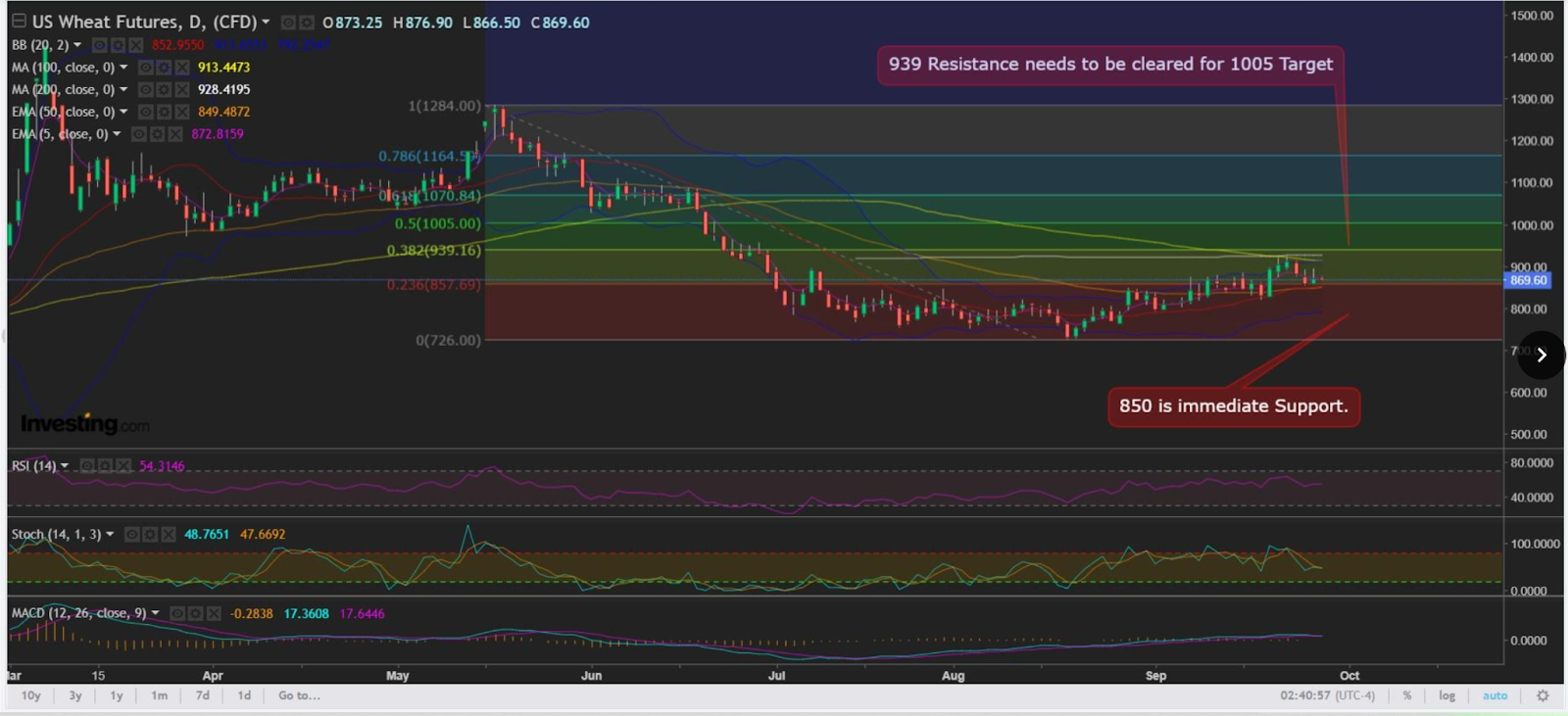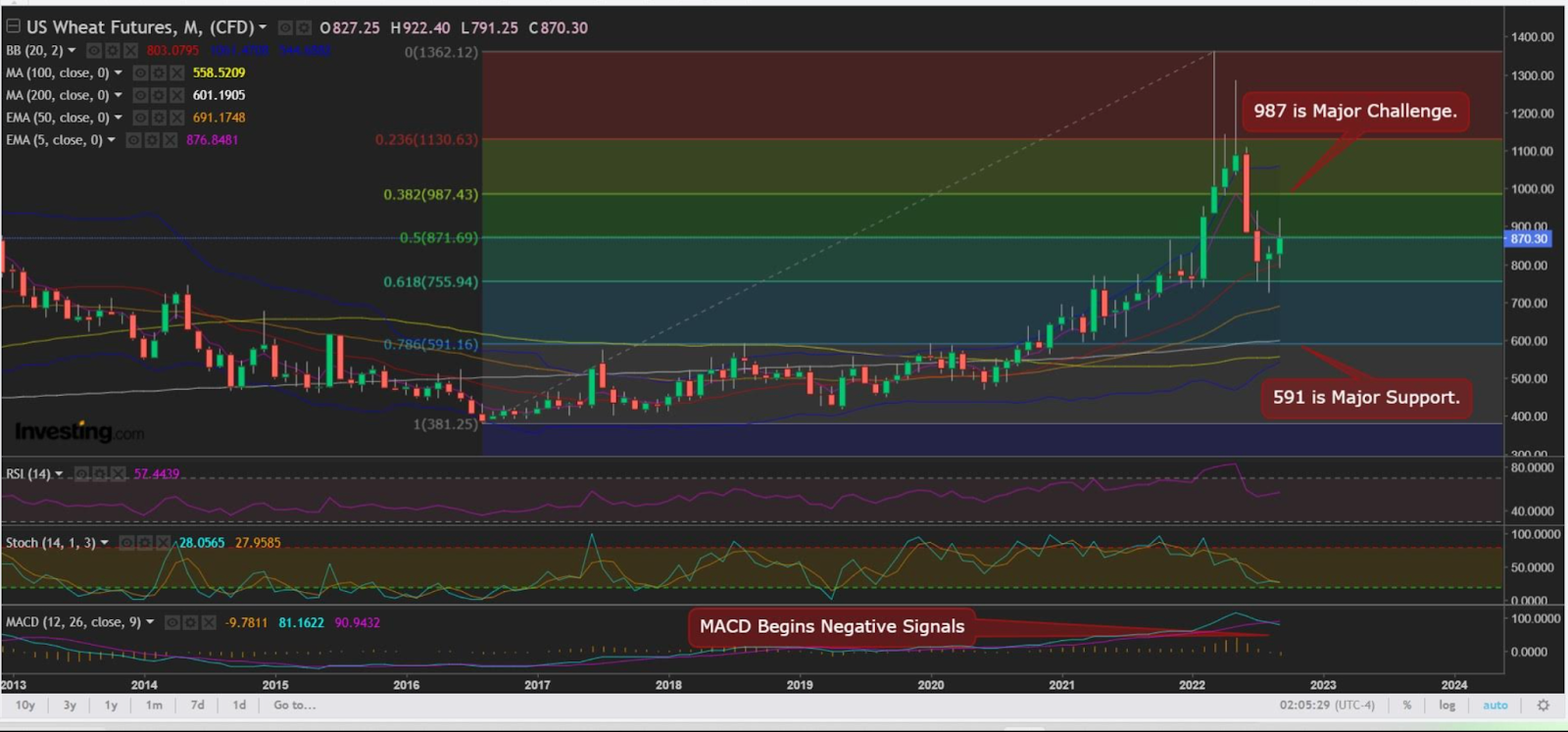Wheat’s Charts Suggest A Rally As Putin Sends Russian Farmers To War
2022.09.28 05:06
[ad_1]
- Wheat jumps 1.5% right after Putin drafts Russian farmers for Ukraine war
- Market up for second straight month, rising 7% from July’s close.
- Global grains data shows world heading for tightest inventories in years
prices jumped Tuesday after President Vladimir Putin said farmers were among Russians being drafted to fight the war in Ukraine.
By Wednesday’s European session, however, the market was trending between flat and negative, raising questions as to whether the 1.5% rally from a day ago had legs.
Putin’s Ukraine-mobilization plan involving farmers fundamentally poses risks to the 2023 wheat crop in Russia, the world’s largest exporter of the grain.
To be sure, Putin told a televised meeting on Tuesday that Russia was on track to harvest a record grain crop of 150 million tonnes, including 100 million tonnes of wheat, in 2022.
Despite that, global grains data shows the world heading toward the tightest grain inventories in years even with the resumption of exports from Ukraine. Data shows that shipments are too few and harvests from other major crop producers are smaller than initially expected.
Autumn, meanwhile, is a busy season for Russian farmers as they sow winter wheat for the next year’s crop and harvest soybeans and sunflower seeds. Winter grain sowing has already been significantly delayed by rains.
Poor weather in key agricultural regions from the United States to France and China is also shrinking grain harvests and cutting inventories, heightening the risk of famine in some of the world’s poorest nations.
The contrasting fundamentals have turned traders’ attention to the third force in the trade: charts.

Charts by SKCharting.com with data powered by Investing.com
At $8.68 per bushel, benchmark wheat futures on the Chicago Board of Trade were headed for a second straight winning month, rising 7% from July’s close.
That shows promise for wheat bulls, says Sunil Kumar Dixit, chief technical strategist at SKCharting.com, adding:
“Wheat is attempting to advance higher towards $9.39, which if decisively cleared, would bring $10.05 as the next target.”
Dixit explains that at $7.56 itself, wheat’s long-term monthly chart showed a 61.8% Fibonacci retracement of the main uptrend from $3.81 to $13.62.

He added that the primary trend for wheat futures was bullish, with the monthly chart exhibiting mixed signals on the Moving Average Convergence Divergence.
Relative Strength Index positivity was also supported by oversold stochastics.
Weekly price action, meanwhile, had short-term rebound signals supported by MACD positivity and stochastics affirmation amid neutral RSI.
“Meanwhile, $7.83 appears to be potential support,” Dixit added.

Putin’s announcement of Russia’s biggest conscription since World War II has triggered a rush for the border by eligible men and unease in the wider population. Officials have said 300,000 more Russians will be called up to serve as part of the mobilization campaign. Some regions bordering Ukraine in the southern and central part of Russia, such as the Kursk region, are major grain producers.
“As part of the partial mobilization, agricultural workers are also being drafted. Their families must be supported. I ask you to pay special attention to this issue,” Putin told the televised meeting.
Sanctions related to the war mean Russia has also struggled to export what is expected to be a record-large wheat crop.
On the other hand, Ukraine’s exports of corn and wheat have risen since a UN-brokered deal with Russia allowed shipments to restart from ports that had been blockaded since the war started. But it remains to be seen how much Ukraine can export, especially if the war drags on.
“It’s sort of a false hope that Ukraine is going to bridge the current gap in supply and demand,” said Gary Blumenthal, head of Washington-based agricultural consultancy World Perspectives.
According to official estimates, Ukraine is expected to harvest 25 to 27 million tonnes of corn in 2022, down from 42.1 million tonnes in 2021, following Russia’s invasion.
Shipments of wheat and other agricultural products from Ukraine have been a fraction of pre-war levels, said Kevin Hack, a global vice president for ingredients supplier Univar Solutions (NYSE:). Adding:
“The supply that’s coming from that area can be cut off at a moment’s notice.”
Disclaimer: Barani Krishnan uses a range of views outside his own to bring diversity to his analysis of any market. For neutrality, he sometimes presents contrarian views and market variables. He does not hold a position in the commodities and securities he writes about.
[ad_2]
Source link







